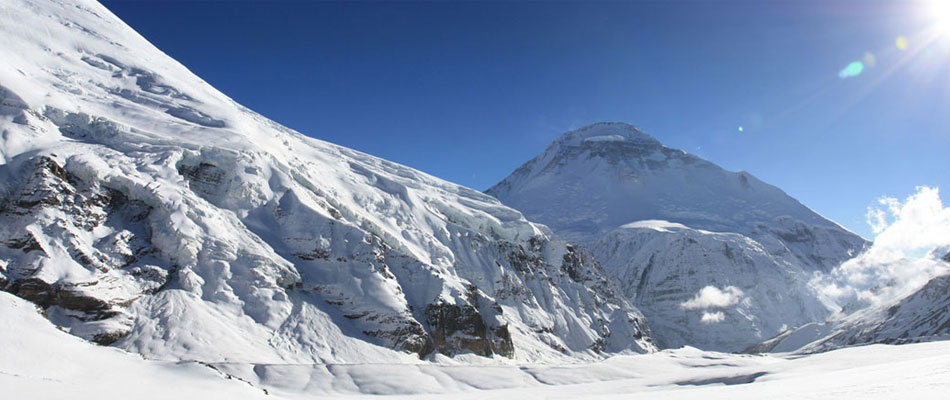Dhaulagiri Trekking is a challenging and an adventurous trek that rewards with nearest view of Mt. Dhaulagiri (8,167m), the seventh highest mountain of the world. The name "Dhaulagiri" means "white mountain" which justifies a magnificent peak rising as a giant shoulder of shining ice and snow. Dhaulagiri stands above the Kali Gandaki Valley which separates the Dhaulagiri range from the Annapurna massif. Trekking in this region is relatively strenuous and needs some mountaineering knowledge, with some previous experience of trekking and good physical condition. Dhaulagiri Trek forms a rare combination of snow- capped mountains, crystal clear lakes and turbulent rivers with deep Georges together with Tibetan monasteries, hot springs and picture square village, all inhabitated by simple and friendly people. Dhaulagiri Trekking is one of the best high altitude treks that lead you through very challenging high passes, crossing over French Pass (5,360m) and Dhampus Pass (5,210m). The main destination of Dhaulagiri Trekking is Dhaulagiri Base Camp which blesses us with enthralling views of mountains such as Annapurna, Nilgiri and Tukuche peak. First discovered in 1808, Dhaulagiri was assumed to be the highest mountain in the world for westerners before its place was taken by Mt. Kanchenjunga after 30 years.
Dhaulagiri Trekking begins from Kathmandu where you get to enjoy the modern Nepali culture along with the monuments of the valley.The trek heads towards Beni, 82 km from Pokhara and we set our foot steps on the Dhaulagiri Trekking trail that reaches Dharapani crossing Babichaur as we walk over a suspension bridge above the Kali Gandaki river and walk into the Myagdi Khola Valley. Ascending ahead, we reach Boghara passing the terraced hills and walk around the easy and comfortable trail from Muri. The difficulty of the route slightly increases from Boghara to reach Dhoban which further leads you to the Italien Base Camp.
As a result of rapidly increasing altitude, we spend a day in Italien Base Camp and acclimatize for the trek ahead. From Italien Base Camp we head towards Glacier Camp crossing the glaciers and continue our journey to the foots of Dhaulagiri i.e. Dhaulagiri Base Camp. For the upcoming days we will be trekking at an altitude of 5000-6000 m, so we spend an extra day in Dhaulagiri Base Camp preparing our body for the tough challenges of French Pass which later takes us to the Yak Kharkha climbing over the Dhampus Pass via Hidden Valley. The descend from Yak Kharkha enters the beautiful village of Marpha from where we take a drive to Pokhara.
Trip Fact:
Duration: 21 Days
Trip Grade: Alpine
Max Altitude: 5,300 M.
Meals: B,L,D on Trek
Accommodation: Camping/Tea House
Best Season: Oct-Nov and Apr-May
Views: Great Himalayan views.
Itinerary:
Day 01: Arrival Kathmandu .
Day 02: Full day guided city tour PM free.
Day 03: Drive to Beni (850m) by bus - 8 hrs. O/N Tent.
Day 04: Trek to Babiachor (950m) - 5 hrs. O/N Tent.
Day 05: Trek to Dharapani (1,400m) 6 hrs .O/N Tent.
Day 06: Trek to Muri (1,850m) - 5 hrs. O/N Tent.
Day 07: Trek to Boghara (2,080m) - 6 hrs. O/N Tent.
Day 08: Trek to Dobang (2,520m) - 5 hrs. O/N Tent.
Day 09: Trek to Choriban Khola (3,110m) - 5 hrs. O/N Tent.
Day 10: Trek to the Italian Base Camp (3,660m) - 7 hrs. O/N Tent.
Day 11: Acclimatization and rest day. O/N Tent.
Day 12: Trek to the Glacier Camp (4,210m) - 6 hrs. O/N Tent.
Day 13: Trek to the Dhaulagiri Base Camp (4,740m) - 7 hrs. O/N Tent.
Day 14: Another acclimatization and rest day. O/N Tent.
Day 15: Cross the French Pass (5,360m), then trek to the Hidden Valley (5,200m) - 6 hrs. O/N Tent.
Day 16: Cross Dhampus Pass (5,200m), and trek to Yak Kharka (3,680m) - 6 hrs. O/N Tent.
Day 17: Trek to Marpha (2,670) - 5 hrs. O/N Tea House.
Day 19: Drive to Pokhara (970 m).
Day 20: Fly to Kathmandu (1,345m). O/N at hotel.
Day 21: Trip ends ! fly back home, taking with you the memory of a life time.


